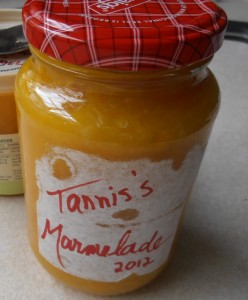We eat to keep our bodies functioning on an even keel. This is part of homeostasis – our cells functioning perfectly so together everything just works like a well-tuned car. Ideally everything ticks over with as few highs and lows as possible.
Unlike cows and other herbivores, we don’t want to spend all day, every day, grazing boring old grass. Instead we eat, on average, three times a day, plus the occasional snack. What we eat, of course, is the argument.
There are three important points to keep in mind when we make decisions about what to eat.
- To fulfill the aims of a stable homeostasis so our individual cells never go ‘hungry’, we need to have systems in place to keep things even, and a constant (yes, constant) supply of food circulating to all our cells.
- For body cells, fuel is fuel. They can utilize fuel that comes from all three food groups: proteins, fats or carbohydrates. Any or all of them.
- Fuel to the cells comes via the blood stream. They neither care nor can tell where that fuel comes from – from an ice cream cone you’ve recently eaten or a succulent steak or from nutrients stored in fat cells within the body, glycogen stored in the liver or – never to be recommended – protein stolen from the body’s own muscles.
If fuel is freely available in the blood stream, we don’t think about eating. (Big corollary here – we can be tempted at any time by sights, smells, even reading about certain foods – temptation is not hunger!) But if fuel is short in the bloodstream, we become genuinely hungry.
Most people don’t realize that fat cells are highly active cells and not passive little balloons of fat that just sit there as many imagine. Every time we fast (that means every time more than a few hours go by without taking in new food – the word ‘breakfast’ is just a description of a real phenomenon), we release fuel into the bloodstream from our fat cells and the liver, to keep a steady supply of nutrients available to the body cells. Homeostasis, remember? Keeping things on an even keel.
Overnight we essentially live on fats from fat cells. When you start thinking of breaking your fast, insulin begins being released from your pancreas, speeding up as you eat. Insulin works for homeostasis too – making sure the fuel in our bloodstream isn’t overwhelming the cells of the body (too much fuel damages cells; long term it shortens the body’s life, so you can say, too much fuel circulating in your bloodstream kills you.) What tells the pancreas to secrete insulin? The brain, the hypothalamus to be precise, receives feedback from the body or other parts of the brain and triggers all sorts of processes.
Insulin puts fat into fat cells. Insulin lets body cells use fats for fuel and that includes muscle cells and all sorts of other cells involved in processes particular to being awake and active.
Eventually, the circulating fuel decreases as the body cells consume it and insulin packs it into fat cells, the release of insulin slows and fats stored in liver or fat cells start being released into the blood stream again. Homeostasis.
Weight gain and hunger are first cousins and both those processes are triggered by anything that elevates insulin. A muffin. A so-called energy bar. A sugary drink. Chips. Things made from flour or sugar are the most potent triggers.
We gain weight due to too much stimulation of insulin or stimulation that lasts longer than nature intended. And we’re driven to eat more often. Eating carbohydrates stimulates hunger through the stimulation of insulin. Eating fats does not because it’s the sugars in the blood that stimulates insulin, not circulating fatty type fuels.
Weight loss comes from lower insulin levels. Besides, we don’t feel hungry.
We can only use our fat reserves when insulin production quiets down. Remember, insulin builds fat, and fats can only be released to be used for fuel when insulin lessens.
The way to lose weight is to make sure you increase the time every day when insulin production is not being stimulated and cut the carbs so insulin is not being stimulated so strongly. But you can eat fats. Lots of them. And you won’t put on weight if your carbs are controlled.
A year ago or so, I read Gary Taubes’ Carbohydrate Hypothesis (in The Diet Delusion or Good Calories Bad Calories) and checked out the science he was writing about by accessing the original articles he cited written by top scientists in the area.
I wanted to tell everybody!
But instead of shouting from the rooftops, I wrote a popular-science book that explains the science behind eating, a book that could be understood by anyone. FULL STOP – eat until you’re full and stop gaining weight is the book, available as a low-cost e-book or as a paperback, which costs only a little more. You’re a click away from reading it!
By the way, insulin levels rise in the autumn and winter. Maybe because human animals need a bit more stored fat on them with cooler weather? The implication of this is that weight loss is somewhat easier in the spring and summer.
